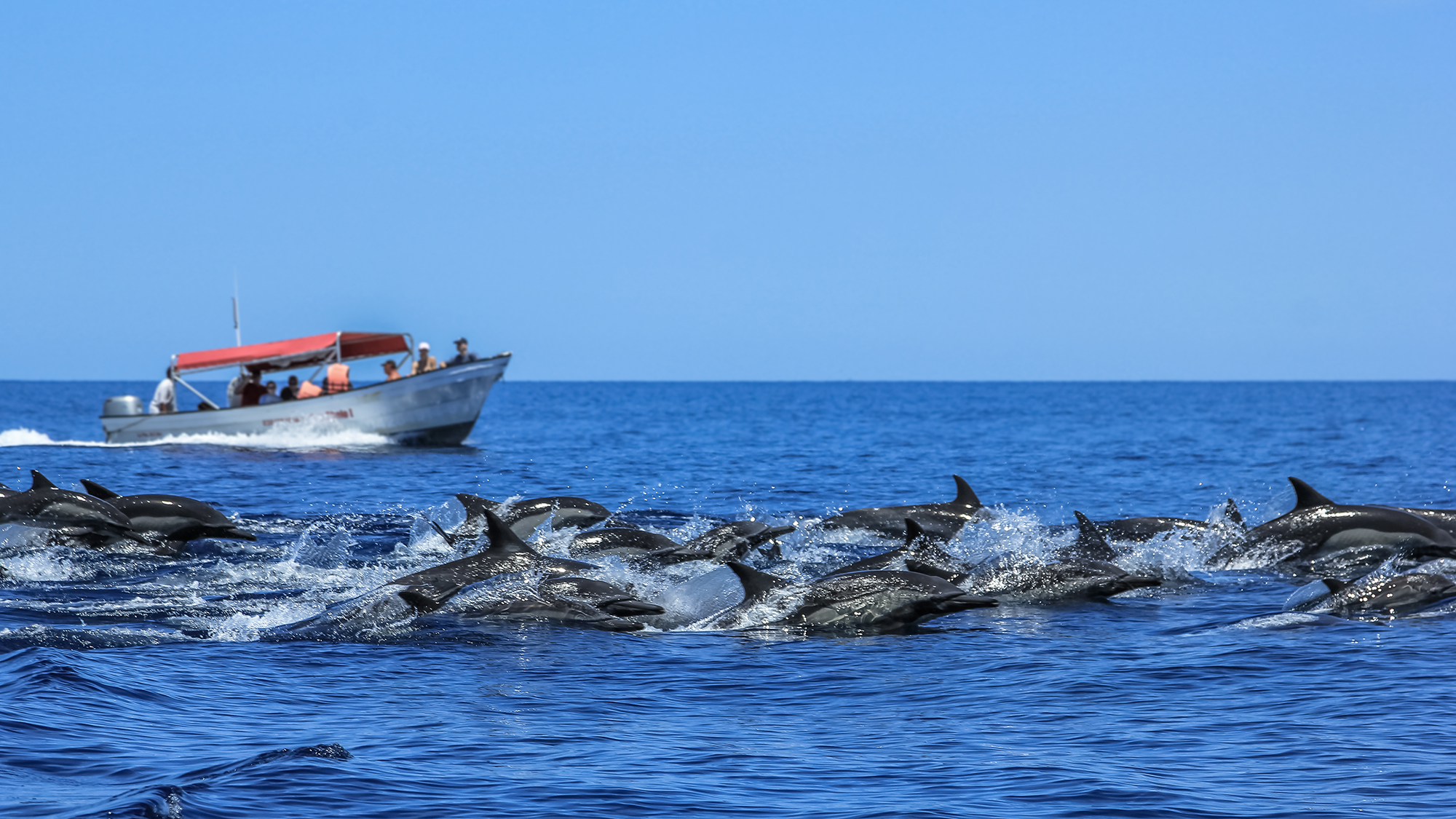

This article was originally featured on Hakai Magazine, an online publication about science and society in coastal ecosystems. Read more stories like this at hakaimagazine.com.
The sparkling blue water of Sarasota Bay, off Florida’s west coast, is a popular boating and fishing spot. The bay is also the year-round home for a population of wild bottlenose dolphins, whose daily lives scientists have been studying since the 1970s. Their research has shown that generations of dolphins have learned to approach people and their boats for an easy meal. That behavior can lead to social media–worthy interactions for people—but has dire consequences for the dolphins.
A recent study drawing on 28 years of data has confirmed the old adage: there’s no such thing as a free lunch. The scientists found that dolphin mothers that interact with boaters have nearly twice as many babies as female dolphins that stay away. But those babies are nine times more likely to die before reaching adulthood. That high death rate poses a problem for the population as a whole.
It’s not just baby dolphins that die prematurely. “The number one cause of death and mortality in Sarasota Bay are those interactions associated with recreational fishing,” says Kylee DiMaggio, a marine biologist who led the study for the Chicago Zoological Society, which has run the Sarasota Dolphin Research Program since 1989.
In the United States, feeding dolphins is illegal under the 1972 Marine Mammal Protection Act, but it still happens often. “Even though we might not mean to, with just our presence, we’re conditioning animals to be around humans more,” DiMaggio says. That proximity increases a dolphin’s risk of being struck by a boat, entangled in a fishing line, or ensnared by a baited hook.
Dolphins are smart and social animals—and mooching has incentives. Getting fish from people instead of hunting could allow female dolphins to save time and energy that they can instead put toward reproduction. It makes sense that the dolphins snatching up bait, nabbing fish from a fisher’s line, and approaching boats for food can have more calves.
However, studies of other species around the world, such as green sea turtles in The Bahamas, show that animals that become reliant on human handouts stop foraging for food. This is true of Sarasota Bay’s dolphins, and it’s a preference that they pass on. DiMaggio says that dolphins from one lineage have been approaching boats for four generations. That behavior is even more dangerous for the youngsters—juvenile dolphins can be killed by boats or fishing gear as they try to stay close to their moms.
For these dolphin mothers, losing multiple babies in quick succession likely causes emotional distress, says DiMaggio. Over time, this stress on female dolphins and the deaths of so many calves could cause population numbers to fall.
“The way that we affect the lives of these animals in urban environments like Sarasota is really complicated,” says Andrew Read, a marine biologist at Duke University in North Carolina, who studies the effects of human activities on marine animal populations and was not involved in the study. He says dolphins in urban environments are even more likely to interact with people when their prey becomes scarce, such as during toxic red tides.
We can’t stop the dolphins from interacting with humans, DiMaggio says. But we can teach people to enjoy wild animals from a safe distance.
And for goodness’ sake, stop giving them food.
This article first appeared in Hakai Magazine and is republished here with permission.
